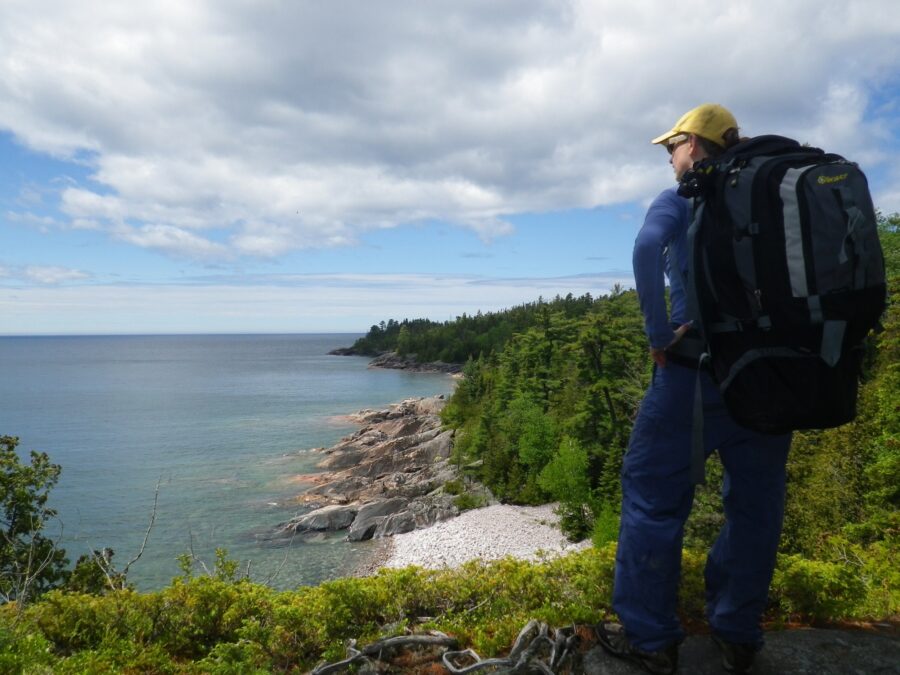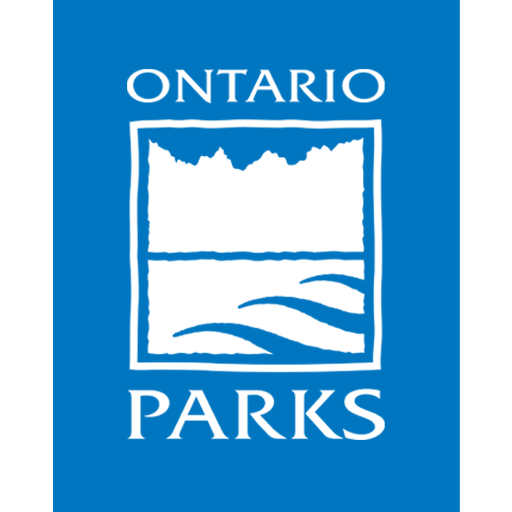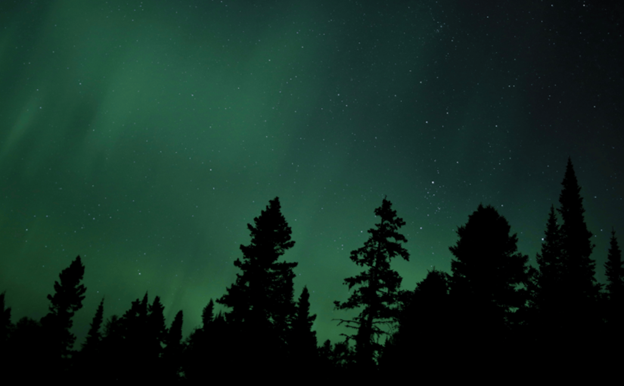Happy International Day of Women and Girls in Science!
Our scientists are absolutely integral to Ontario Parks, working as researchers, biologists, ecologists, and more!
Take a look at a few of our awesome women scientists:
Patricia Davidson, Beach Stewardship Coordinator
Trish began working for Ontario Parks in 2010 as the coordinator for the Piping Plover Recovery Program at Wasaga Beach Provincial Park. Under her direction, Wasaga Beach has become the most successful nesting site for the endangered Piping Plover in all of Ontario, fledging over 70 birds since 2008!

Trish also oversees the resource management efforts at Wasaga Beach Provincial Park, including species-at-risk research and monitoring, invasive species removal, and habitat restoration.
Katie Tripp and Kelsey Atatise, Quetico Foundation Research Team
With the support of the Quetico Foundation, Kelsey and Katie have been involved in a number of research and monitoring projects important for the management of Quetico Provincial Park.

These projects include:
- monitoring distribution and movement of invasive spiny water flea in lakes
- collecting data to assess vulnerability of lake trout habitat to climate change
- monitoring survival and regeneration of red and white pine after fire
- collecting data to determine historical fire frequency in red pine and its impact on regeneration
This information is critical to the development of effective resource management plans for the park and assessing the effectiveness of management actions.

“I work in science because I’m interested in the natural environment, how it works, how I can help it survive the changes that humans are making to it and I just love the outdoors,” says Katie. “I love getting to go into the forest to try and understand how we can protect it better so it can continue being the place we all love. In my short career in the sciences field, I’ve had many male managers and leaders. I want to show other women that they can do it too and that there is a place for them. I want them to know they can participate and protect the land just as well as anyone else.”
Hannah Dodington, Snake Researcher
Hannah has been working to support the ongoing research on species-at-risk snakes (primarily the Massasauga Rattlesnake) in Killbear Provincial Park for the past two seasons.

Her time in the field helps conservationists to better understand the biology of these snakes and the threats which they face from humans. Scientific trends recorded over time can provide important information as to how we can better protect these species today and in the future.
“As a woman working in science, I feel very confident and capable in my position. I respect each and every woman who I have worked alongside and have learned so much from these people. Our interests and passions don’t discriminate against our gender, so why should our career opportunities? We must continue to support young women in navigating and pursuing the paths available to having a career in science.”
Jennifer Arnold, Professor of Biology, Penn State University (Berks Campus)
Jennifer undertakes research at Presqu’ile Provincial Park and regionally to investigate drivers of population declines for inland breeding Common Terns and restore nesting colonies.

She enjoys collaborating with Ontario Parks to develop and test novel management strategies. These efforts have restored breeding success for terns at Presqu’ile and uncovered many details about the unique ecology of terns in inland waters.
As part of this collaboration, Jennifer brings undergraduate students to the parks where they explore environmental careers, gain practical experience, and support park programs.
“My passion for wildlife and finding those ‘quiet places’ was inspired at a young age by my father who shared his love and curiosity of the natural world with me. Since then, I have had many amazing mentors, not the least among them, the terns themselves which have become my passion over the last two decades. It is a privilege to work with these delicate and determined animals. They constantly remind me of the value of resilience in life, and I hope that my work will help to preserve them for future generations. As a mentor, I aim to encourage young people to pursue their own passions, marvel in the excitement of new discoveries, and find their own way of contributing to environmental stewardship.”
Kathleen Cote, Management Biologist (MNRF)
While Kat worked at Lake Superior Provincial Park, she launched the park’s iNaturalist project to encourage citizen scientists to collect data on biodiversity. During this time, she also studied root growth of wetland plants in the park as part of her Master’s thesis in biology.

She has conducted inventories of Lake Superior’s moose populations by helicopter, and assisted with wildlife and vegetation surveys on Michipicoten Island Provincial Park. In future, she hopes to establish snowshoe hare survey plots in Wildlife Management Unit 34 — which includes Lake Superior Provincial Park — as part of a provincial MNRF data collection project.
She has championed the development of a research bursary for graduate students conducting approved research in Lake Superior through her work with the Friends of Lake Superior Park.
Kat works in science to protect what sustains us, ecologically and psychologically, and to ensure that wild spaces are protected for future generations.
Anne Craig, Senior Marketing Specialist
Anne manages market and visitor research on behalf of Ontario Parks. When we think of science and parks we tend to think about the biological sciences, but social science is also important.

Understanding who is and is not visiting parks, how they visit now, and how they would like to visit in the future helps Ontario Parks make important business and operational decisions and plan for the future.
Anne is currently exploring the different patterns of visitation that Ontario Parks saw in 2020, and getting ready to roll out the 2021 Ontario Parks Visitors Survey.
Christina Davy, Research Scientist, Wildlife Research and Monitoring Section (MNRF)
Christina’s research team explores how endangered wildlife — including bats, turtles, and snakes — respond to rapid environmental changes. One of her main goals as a researcher is to provide park managers with the information they need to manage healthy wildlife populations in their protected areas, and support the recovery of species at risk.

We rely on wetlands, forests, lakes and rivers just as much as the wildlife that uses these habitats relies on them. Healthy habitats for wildlife are also healthy habitats for people – so recovering species at risk in Ontario is part of ensuring a sustainable future for Ontarians.
Sue Carstairs, Executive and Medical Director, Ontario Turtle Conservation Centre
Sue is currently running a field project in a provincial park to help to determine if “headstarting” (hatching, rearing and releasing) is an effective conservation strategy for freshwater turtles. The project involves tracking released headstarted Juvenile Blanding’s turtles, via radiotelemetry, alongside a comparable group of wild-hatched juvenile Blanding’s from the same site.

“I work in conservation as a lifelong passion, and am fortunate to be able to combine my training as a veterinarian with Ontario Turtle Conservation Centre’s multipronged approach to turtle conservation (running the hospital, headstarting program, education program and research program). Our field work is one prong of this multifaceted conservation approach.”
To all amazing women in science working passionately to understand and protect our natural spaces: thank you for your hard work and expertise, and congratulations for all your achievements!
Why are your scientists picking up wildlife? Can I pick up snakes and turtles too?
Please do not handle wildlife. The staff members featured here are trained scientists engaged in professional research. These scientists are following a strict animal care protocol approved by the Ministry of Natural Resources and Forestry. These protocols review the desired outcome of the research, and ensure measures are taken to put the least possible amount of stress on the animal. We ask that you always observe animals from a distance for both the safety of you and the animal.


